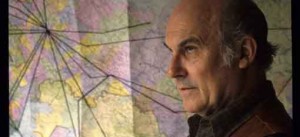Avi Friedman: Thinking Outside The Box On Affordable Housing
The SFU Centre for Dialogue presents renowned international housing expert Dr. Avi Friedman, in collaboration with the Urban Development Institute, City of Vancouver, Social Planning and Research Council of BC, BC Non-Profit Housing Association and other partners.
Lecture Description:
Metro Vancouver’s many attributes make it a highly desirable place to live and invest. Unfortunately, that makes housing, whether rental or ownership, unaffordable for many of the region’s citizens. The need to think outside the box about lower-cost residential options has become an urgent priority. Renowned international housing expert Dr. Avi Friedman speaks about what’s making housing unaffordable in Metro Vancouver — as well as the direct and indirect contributions that affordable housing makes to communities. He describes potential housing strategies, including examples of local and international projects, that offer innovative affordable housing solutions for this region.
Keynote biography: Avi Friedman, Professor, McGill University School of Architecture
Dr. Avi Friedman received his Bachelor’s degree in Architecture and Town Planning from the Israel Institute of Technology, his Master’s Degree from McGill University, and his Doctorate from the University of Montréal. In 1988, he founded the Affordable Homes Program at the McGill School of Architecture where he teaches. He is known nationally and internationally for his housing innovation and in particular for the Grow Home and Next Home designs. He is the author of ten books and was a syndicated columnist for the CanWest Chain of daily newspapers. He is a practicing architect and the recipient of numerous awards including the Manning Innovation Award and the United Nations World Habitat Award. In the year 2000 he was selected by Wallpaper magazine as 1 of 10 people from around the world “most likely to change the way we live”. Read more
Thashlin Govender Et Al – Living in Low-Cost Housing Settlements In Cape Town, South Africa—The Epidemiological Characteristics Associated With Increased Health Vulnerability
by Thashlin Govender, Jo M. Barnes & Clarissa H. Pieper
The aim of this study was to assess the epidemiological characteristics of a representative sample of subsidized low-cost housing communities in the City of Cape Town in relation to their living conditions and their health status. Four subsidized low-cost housing communities were selected within the City of Cape Town in this cross-sectional survey. Structured interviews were administered in 336 dwellings on 173 plots.
Data was obtained from 1,080 persons with a response rate of 100%. Almost all of the state-subsidized houses had one or more shacks in the backyard, increasing the occupation density and putting the municipal sanitation infrastructure under pressure. In 40% of main houses, one or more cases of diarrhea were reported during the two weeks preceding the survey, in contrast to 23% of shacks (p<0.0007). Of the total group, 1.7% willingly disclosed that they were HIV positive, while 3.5% reported being tuberculosis (TB) positive. One of them reported having multiple drug-resistant TB. None of the HIV positive or TB positive persons was on any treatment. A reported 6.3% of the families admitted regularly eating only one meal per day, whereas 18.5% reported having only two meals per day. The shack dwellers had significantly higher education and employment status (p <
< 0.01), since they had to pay rent. Improvements in health intended by the rehousing process did not materialize for the recipients of low-cost housing in this study. The health vulnerability of individuals in these communities had considerable implications for the curative health services. Sanitation failures, infectious disease pressure, and environmental pollution in these communities represent a serious public health risk. The densification caused by backyard shacks, in addition, has municipal service implications and needs to be better managed. Urgent intervention is needed to allow the state-funded housing schemes to deliver the improved health that was envisaged at its inception.
0.01), since they had to pay rent. Improvements in health intended by the rehousing process did not materialize for the recipients of low-cost housing in this study. The health vulnerability of individuals in these communities had considerable implications for the curative health services. Sanitation failures, infectious disease pressure, and environmental pollution in these communities represent a serious public health risk. The densification caused by backyard shacks, in addition, has municipal service implications and needs to be better managed. Urgent intervention is needed to allow the state-funded housing schemes to deliver the improved health that was envisaged at its inception.
Read more: http://www.ncbi.nlm.nih.gov/pmc/articles/
The Innovation of Population Forecasting Methodology in the Inter-war Period: The Case of the Netherlands
 4.1 Introduction
4.1 Introduction
The foundations of the model of population dynamics that was to dominate population forecasting methodology throughout the greater part of the 20th century were laid by the English economist Edwin Cannan (1861-1935). By the end of the 1930s, it had become the new standard model for forecasting national populations. After the Second World War, the model became known as the Cohort-Component Projection Model (CCPM).[i]
However, this does not mean that the introduction and general acceptation of the new methodology was a matter of veni, vidi, vici. On the contrary, almost three decades passed between its emergence in 1895 and its reinvention and general application for national population forecasting purposes in the mid-1920s.
Read more
Chicago – The National Public Housing Museum is Now Virtual
 The National Public Housing Museum and the Center for the Study of Housing and Society promotes and fosters the deep cultural understanding through artifacts, photos, archival documents, social history, public policy, and other material objects spanning seven decades. It is the first institution dedicated to interpreting the experience of public and social housing and the illumination of resilience of poor and working class families of every race and ethnicity. The Museum is slated for a phased opening beginning in 2013.
The National Public Housing Museum and the Center for the Study of Housing and Society promotes and fosters the deep cultural understanding through artifacts, photos, archival documents, social history, public policy, and other material objects spanning seven decades. It is the first institution dedicated to interpreting the experience of public and social housing and the illumination of resilience of poor and working class families of every race and ethnicity. The Museum is slated for a phased opening beginning in 2013.
http://www.publichousingmuseum.org/
Patty Russell – “To Build or Not to Build” – That is the Question
Forbes India, October,16, 2012 – Blog. Here’s a dilemma: You are the owner of a construction company and to expand your market, you need to go into neighborhoods where clients can’t pay the typical construction costs; where there is a dearth of skilled labour and where it is nearly impossible to transport the materials typically associated with your conventional construction methods. You ask yourself: Why make the effort – is the ‘juice worth the squeeze?’
This was the situation faced by Moladi, a South African family-owned business. Sure, there was a demand for new construction – after all, affordable housing in low-income areas can provide a pivotal asset and source of stability that can pull a family out of poverty. In fact, many families were trying to build houses on their own, leading to sub-standard construction and often dangerous living conditions.
Moladi, however, was ready to rise to the challenge. They put a lot of ‘skin in the game’ from a technological innovation perspective, and in the process designed a new construction material to meet the constraints of the target market – a removable, reusable, recyclable, and lightweight plastic formwork mould, which when filled with aerated mortar, could form the wall structure of a house in as early as one day. Better yet, each set of Moladi formwork panels could be reused 50 times, without electricity, and by unskilled labourers.
Read more: Patty Russell -To Build or Not to Build
From The Web – Kapuscinski Development Lectures
Ryszard Kapuscinski (1932-2007) was a Polish journalist and writer who covered developing countries. Kapuscinski, whose books were translated into many languages, was often named the “Third World Chronicler” or the “Voice of the Poor” for his famous reportages and books describing developing countries on all continents. Among other books, he was famous for: “The Emperor” on Ethiopia, “Shah of Shahs” about Iran, “The Shadow of the Sun” about Africa, “Another Day of Life” about Angola, and “Imperium” about the Soviet Union.
Read more: http://kapuscinskilectures.eu/



